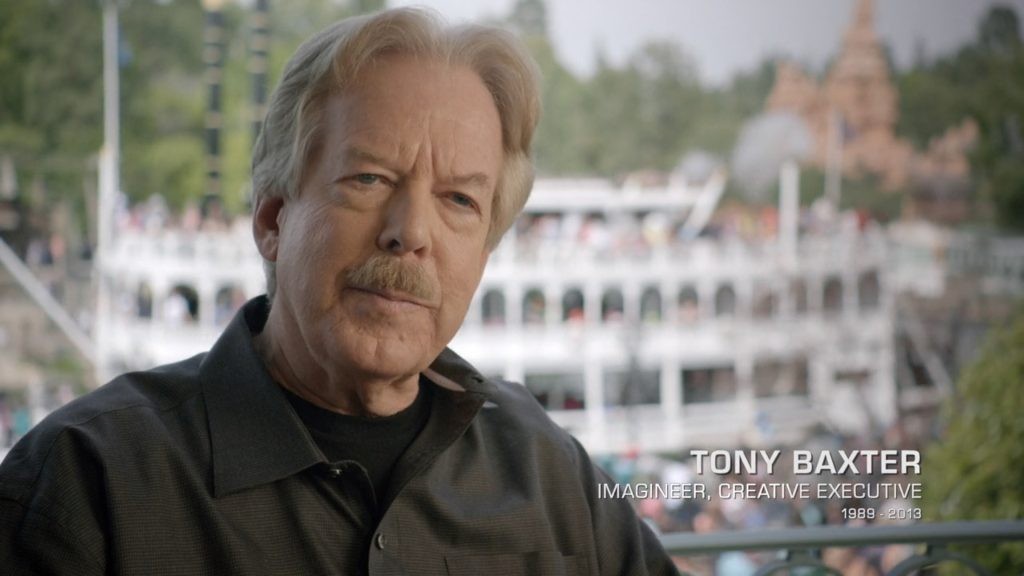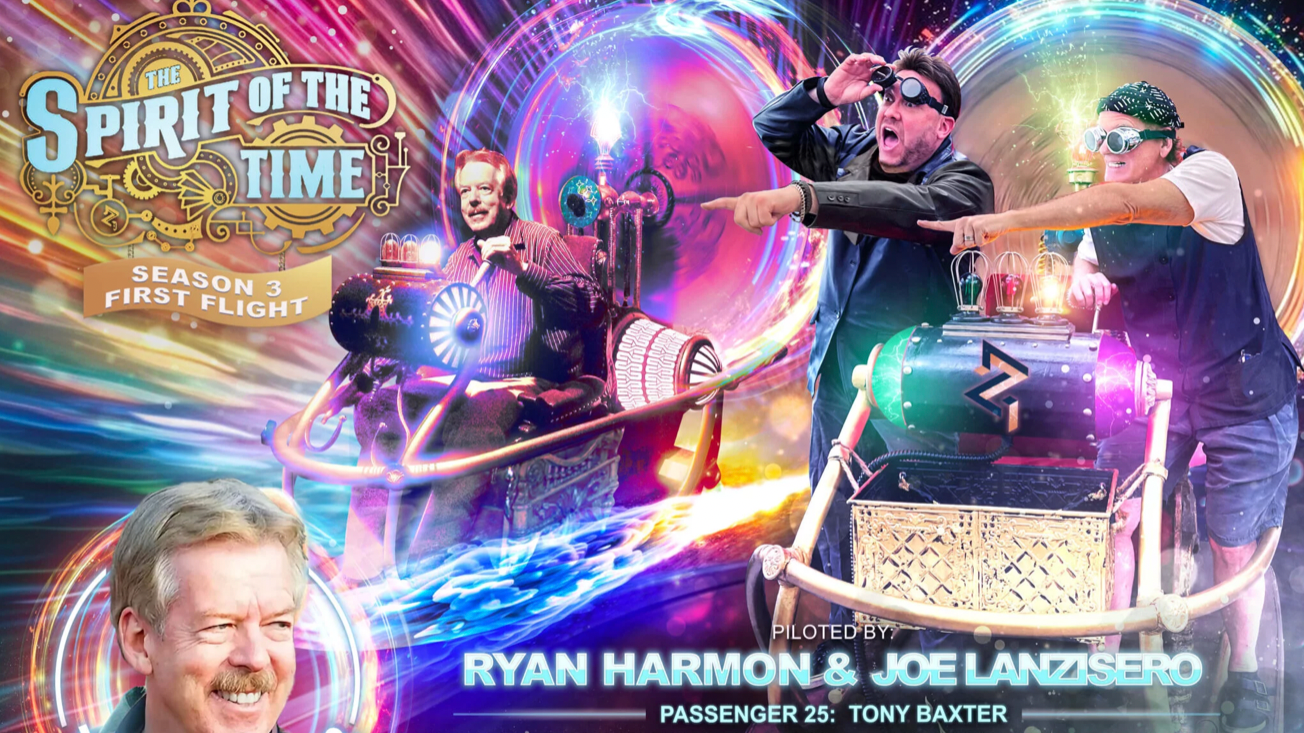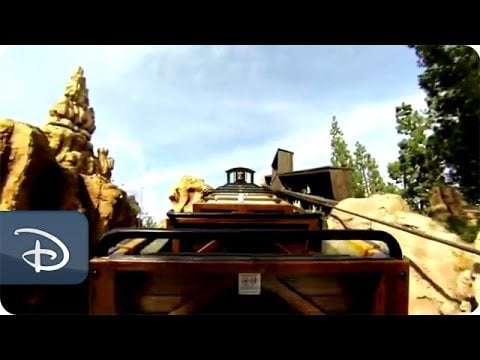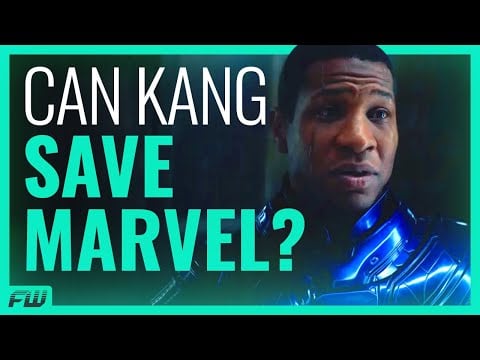Legendary Disney Imagineer Tony Baxter, – notable for having overseen the construction of multiple iconic Disneyland rides, including Big Thunder Mountain Railroad, Star Tours, and Splash Mountain, – was the latest guest on Zeitgeist’s The Spirit of the Time livestream. FandomWire was lucky enough to receive an invite to this online event and take part in a Q&A with Tony. Below is the written transcription of that interview:

You obviously have a great love of film that has informed your career. Thinking back to your childhood, where there any particular standout films that you credit as an influence?
Tony Baxter: I saw The Ten Commandments four times in the cinema and that film taught me how to present a layered, lengthy story to an audience of children in an engaging way. It is a seminal picture for a reason and it felt real. Ray Harryhausen’s The 7th Voyage of Sinbad was another huge one, particularly due to the dragon. That was actually my favourite dragon that I’d ever seen in a movie until the following year when Sleeping Beauty was released.
Speaking of Sleeping Beauty, how was it that you came to get a job in Disneyland?
Tony Baxter: Scooping ice cream at 17 years old allowed me to live and breathe the park. The pay wasn’t great, but that didn’t matter, as I was getting paid to be at Disneyland. And to this day I can still remember all of the ice cream flavour combinations and I can also tell you that the most expensive cone at that time was 15 cents. They went up to 50 cents before I left though.
Also read: Jörg Tittel and Ryan Bousfield Talk The Last Worker, Future Plans and More (EXCLUSIVE)
You speak about your how that job wasn’t very well paid, I’m curious what your parents made of your ambitions to work your way up the ladder in Disneyland. What did they make of your career choice?
Tony Baxter: They wanted me to be an architect, which I initially found to be quite limiting. Although, I guess what I ended up doing in the end was a form of architecture. Designing rides in Disneyland was my way of making that sort of job feel fun.
How Tony Baxter became an iconic Imagineer:

FandomWire: So how did one transition from scooping ice cream to creating iconic theme park rides in those days?
Tony Baxter: The first step was being transferred and given the opportunity to work on the attractions which spoke to my passion for acting. I got to take part in experiences like The Pirates of the Caribbean ride, which had only recently opened at that time. That was where I got to experience some of the praise and glory that comes with working on the attractions in Disneyland.
And how did that lead to you getting the job as an Imagineer?
Tony Baxter: I heard they were looking for people, so I applied and got an interview. I actually brought a customised railroad trainset to my interview with me in the back of my car. This thing was like a Frankenstein’s Monster that I made to show the original concept that I had in my mind for Big Thunder Mountain Railroad. I had built the thing using glue to make little wooden structures and welding pieces of steel together, there were marbles involved that acted like a Rube Goldberg Machine, triggering certain events to take place as the train passed by.
After the interview went fairly well, they asked me if there was anything else. It was then that I brought the guys outside to my car to show them what I had built. The damn thing was far too heavy to lift into the office were the interview was taking place so I had no intention of lifting it from the back of the car! However they then asked me to bring it inside, which I was able to by recruiting a few helpful Disney employees who happened to be passing by to give me a hand. During that walk, I got to see the back ends of so many of the different attractions and rides for the first time. After I brought it inside and set it down, more and more people came down from offices upstairs to come and see it. I became known around the office for that and I truly feel like that the things that got me the job and put me ahead of the rest of pack.
How did you come to learn that you had actually been given the job?
Tony Baxter: Someone came to collect my costume for the attractions and told me that I had technically lost my current job since no Disneyland employee could hold two separate jobs within the park concurrently. I took this to mean that I got the Imagineering job, but nobody had officially called me from Imagineering to confirm that this was the case.
I put on my best suit and drove up to confirm that I indeed did have a job and they put me straight to work. Even though I had my suit on, they gave me an apron and asked me to paint the plywood on the Hall of Presidents ride using black paint. I literally went from wearing overalls and scooping ice cream one day, to wearing a suit and painting plywood in The Hall of Presidents the next. In terms of my pay upgrade, I went from earning 2 dollars per hour on the attractions to 3 dollars per hour in Imagineering.
Which was the first ride you worked on designing at Disneyland as a lead?
Tony Baxter: That would be Big Thunder Mountain Railroad, which was supposed to open in 1975, but the opening of Space Mountain pushed it back. It eventually opened in 1979. John Denver was originally going to open the ride, but that sadly fell through.
And what came next after that?
Tony Baxter: Journey Into Imagination in the EPCOT Center was the next one. As it was based in EPCOT, it was always intended to be more of a prestigious thing, devoid of Mickey and any other similarly recognisable characters. We worked with Kodak to promote the launch of the attraction and they spread the message of what we intended the ride to be. They were the first to publish photos of Figment, the character who became the mascot for the ride. The name for Figment actually came from an episode of Magnum PI.
Also read: IGGYMOB COO Kay Kim Discusses Reviving A 20-Year-Old Franchise with Gungrave G.O.R.E (EXCLUSIVE)
Finally, I’d like to ask a question about the future. Your love for in-person experiences is well-known. What do you think of the shift away from more traditional ride experiences like Splash Mountain and Space Mountain towards more of an emphasis on digital simulation rides that have become more prominent in theme parks recently?
Tony Baxter: I did The Void ride in Orlando and it was neat, but it simply does not compare to the realness of something like The Jungle Cruise. VR does not have the same sustained effect on a young mind as an actual realised world does, and so the novelty wears off faster. Personally, I would always opt for a comunal experience over a solo experience.
Tony Baxter was a joy to chat to and he was full of fascinating stories. If you haven’t yet been lucky enough to experience one of the rides he worked on, then I’d highly recommend that you do so. Both his anecdotes about the past and his thoughts on the potential future of Disneyland were fascinating to listen to. Thanks again to Tony for taking the time to share these stories and be sure to stay tuned to FandomWire for more upcoming content just like this.
Follow us for more entertainment coverage on Facebook, Twitter, Instagram, and YouTube.




